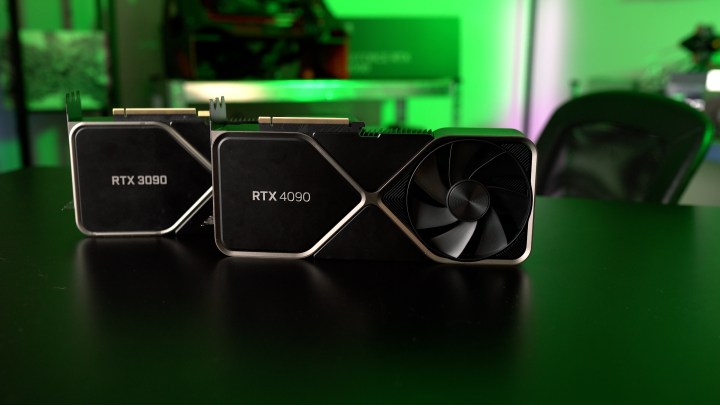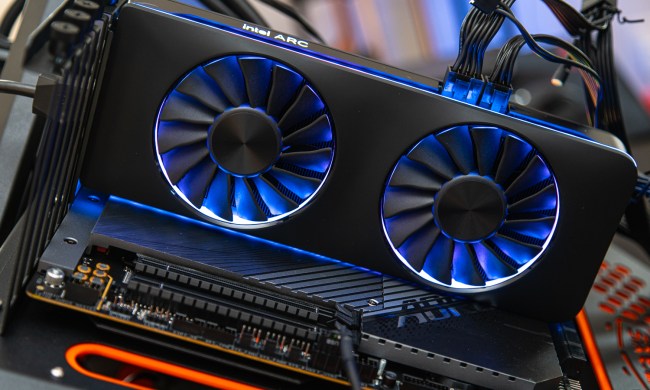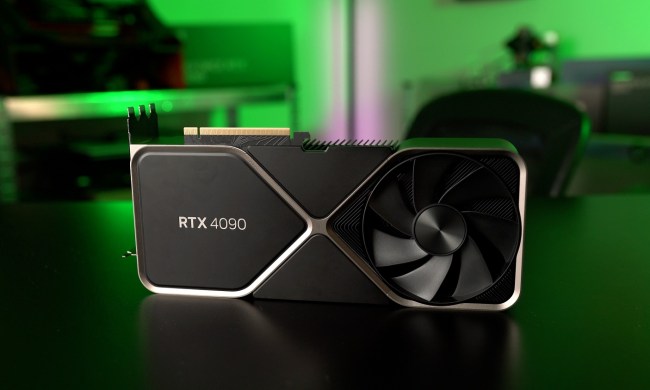New leaks regarding the rumored RTX 4060 Ti have left many PC gaming enthusiasts scratching their heads. Not only does the GPU sound pretty unimpressive so far, but it also shows Nvidia’s commitment to one strange choice — the 12-pin power connector. Yes, the exact same one that’s been getting so much bad press recently.
Seeing this bizarre decision makes me wonder — is Nvidia’s commitment to the high-end part of the market really the right way to go?
A lukewarm response
RTX 4060 Ti has a very short reference board. The PG190 still uses CEM5 connector.
AD106-350-A1
4352FP32
8G 18Gbps GDDR6
32M L2
220W— kopite7kimi (@kopite7kimi) December 13, 2022
The news about the upcoming RTX 4060 Ti broke out thanks to kopite7kimi on Twitter, who is a reliable leaker. Even so, it’s important to remember that nothing is confirmed until Nvidia itself speaks up, and even then, as the “unlaunched” RTX 4080 12GB taught us, it’s still not quite final until it’s on the shelves.
With that disclaimer out of the way, let’s see what the Twitter tipster had to share. According to the tweet, the RTX 4060 Ti will feature the AD106-350-A1 GPU, and it will come with 4,352 CUDA cores, as well as just 8GB of GDDR6 memory clocked at 18Gbps. Kopite7kimi didn’t mention this, but earlier leaks predicted a 128-bit memory bus — this translates to a bandwidth of 288GB/s. The card has a vastly increased cache when compared to the previous iteration, now sporting 32MB instead of 4MB.
Needless to say, the response of the internet at large has been lukewarm so far. A quick glance at the RTX 3060 Ti tells us why. The previous-gen card also comes with 8GB of GDDR6 memory, has more cores (4,864), and might have more bandwidth because of the 256-bit bus (448GB/s versus 288GB/s). Keep in mind that the bandwidth of the 4060 Ti is even more unconfirmed than the rest of the leak, so treat it with caution.
In any case, these specifications aren’t very impressive, although the increase in cache will certainly be an improvement. But there’s more to it.
Doubling down on a controversial decision?

The leaker noted that the card has “a very short reference board,” and that it still uses the CEM5 connector. This is what made me pause.
This implies that Nvidia might still be using the new 12VHPWR connector that we already know from the RTX 4090 and the RTX 4080, and that’s despite the fact that the 4060 Ti is said to come with a total board power (TBP) of 220 watts.
For reference, there have been cases of melting connectors on the RTX 4090, and the 12VHPWR connector is thought to be the problem. Nvidia hasn’t made any official statements about this other than that it’s investigating the issue, and the problem is not widely spread, but I can’t help but wonder why Nvidia would use this connector at all.
Assuming the RTX 4060 Ti really does come with a TBP of 220 watts, there is no need for Nvidia to use this connector in the first place. In fact, Nvidia also used a 12-pin connector (albeit a different one, without the extra four “sense pins”) on the RTX 3060 Ti — but Nvidia’s board partners didn’t follow its lead, and the majority of them went with an 8-pin design instead.
Sticking with an 8-pin connector would certainly be sufficient for a fairly middle-of-the-pack card. In fact, I wouldn’t be surprised if Nvidia’s partners once again go with an 8-pin design for the RTX 4060 Ti and only the Founders Edition cards use Nvidia’s 12-pin solution.
High-end cards for a midrange market

In this generation, the pricing of Nvidia’s cards leaves a lot to be desired. We have the RTX 4090, starting at $1,600, and the RTX 4080, starting at $1,200. Somehow, the way these cards are priced makes the RTX 4090 seem like a good deal, but it isn’t — both GPUs are very expensive.
Nvidia’s approach so far couldn’t be more different from Intel’s. Intel is a new player in the GPU market, and Arc Alchemist GPUs are far from a widespread success, but a recent interview with Intel’s Raja Koduri delivers some food for thought. Koduri made Intel’s stance clear — to target the majority of PC builders, going super high-end is not the way to go.
“High-end has no limit right now. What is the definition of high-end? Is it 600 watts? Obviously, our partners and our customers want some halo SKUs for bragging rights, and we always like to figure out ways to enable that,” Koduri told Gadgets360. “But my priority at this point is getting that core audience, with one power connector. And that can get you up to 200 to 225W.”
The Intel exec is not wrong — the “core audience” is not composed of people who will be buying $1,600 cards along the lines of the RTX 4090. The RTX 4060, RTX 4060 Ti, and the RTX 4070 are the cards you’d expect to see the most of in this generation, so this should be the market that Nvidia tries to cater to with good pricing and adequate specs.
So far, in terms of specifications, the RTX 4060 Ti is shaping up to be quite average, and then we also have the weird choice of a power connector. Nevertheless, if Nvidia can keep this card affordable, it will likely succeed anyways.
Unfortunately, the pricing of the first two cards in the Ada range doesn’t give me much hope for the rest of the lineup. Let’s hope that the new AMD RX 7900 XTX can put some heat on Nvidia and motivate it to keep the prices reasonable.



